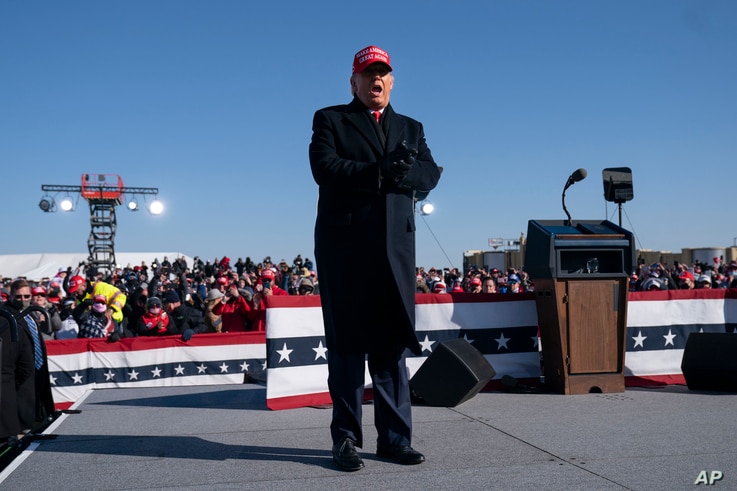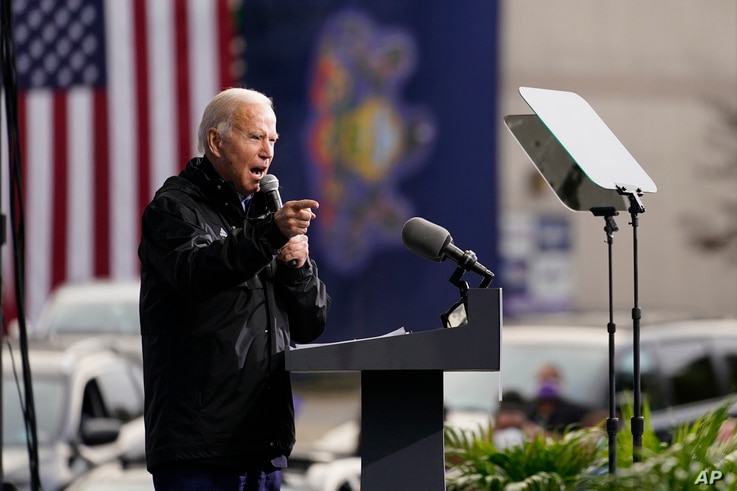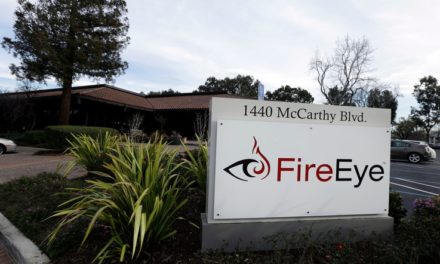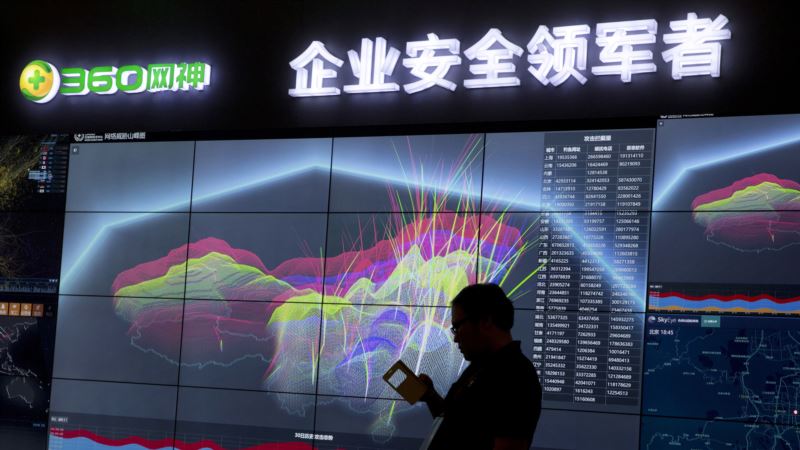U.S. President Donald Trump and his Democratic challenger, former Vice President Joe Biden, headed to battleground states Sunday to rally their supporters two days ahead of Tuesday’s national election for a four-year term in the White House.
Trump started a five-state trek in suburban Macomb County, Michigan, the upper Midwest state he unexpectedly captured by less than 11,000 votes in his 2016 victory over Democrat Hillary Clinton en route to winning the presidency.
Trump is making two more appearances in Michigan on Monday, including repeating his final campaign stop from four years ago, at a late-night rally in the mostly conservative stronghold of Grand Rapids in the western part of the state.

But late polls show Biden holding on to his advantage over Trump in Michigan and Wisconsin and to a lesser extent in Pennsylvania, the three traditionally Democratic states that Trump won narrowly four years ago but ones that Biden hopes to reclaim.
The importance of the three states is borne out by the fact that were Biden to win all three and all the remaining states won by Clinton in 2016, he will win the presidency. Currently, polling shows Biden leading in all the states won by Clinton, making it a steeper climb for Trump to win a second term.

Both Trump and Biden have frequently visited all three states, with Trump holding four rallies in Pennsylvania on Saturday and Biden headed to two there on Sunday, in the state’s biggest city, Democratic-dominated Philadelphia. Trump’s strength in Pennsylvania is concentrated in more conservative, rural areas and smaller cities.
After his stop in Michigan, Trump flies to rallies in four more battleground states, the farm state of Iowa, where a new poll shows the president pulling ahead of Biden, and then on to North Carolina, Georgia and Florida, three more states Trump won in 2016 that are likely to play pivotal roles in the overall national outcome in the Tuesday election.
National polls continue to show Biden leading Trump, by about 8 percentage points, leaving Trump to face the prospect of becoming the third U.S. president in the last four decades to lose his bid for reelection after a single term.
U.S. elections, however, are not determined by the national popular vote in the country’s indirect form of democracy, but rather in the 538-member Electoral College, with each candidate needing a majority of 270 to win the presidency. In all but two of the country’s 50 states, either Trump or Biden will win all the electors from each state by winning the popular vote there, with the most populous states holding the most electors.
To some degree, Biden’s national polling edge is buoyed by his wide advantage in two populous states he will almost certainly win, California and New York, while Trump is all but assured of capturing a string of much smaller Republican-dominated states through the country’s agricultural and rural heartland.
But a new NBC News/Wall Street Journal survey shows Biden is leading Trump in these 12 battleground states by an average of 51%-45% — Arizona, Florida, Georgia, Iowa, Maine, Michigan, Minnesota, North Carolina, New Hampshire, Nevada, Pennsylvania and Wisconsin.
Polling aggregator fivethirtyeight.com says Biden is ahead of Trump in 11 of these states, all except Iowa, although sometimes Biden's edge is narrow.
On Sunday, Biden is speaking at a “Souls to the Polls” event in Philadelphia, and at a drive-in event there later. While Trump was elsewhere in Pennsylvania on Saturday, the former vice president rallied supporters in Michigan, appearing with former President Barack Obama, with whom he served for eight years.
As of midday Sunday, more than 93 million people have voted in the election, about two-thirds of the overall 2016 vote count of 138.8 million, according to the U.S. Elections Project. About two-thirds of the early votes were mail-in ballots and the remainder were cast in person.




